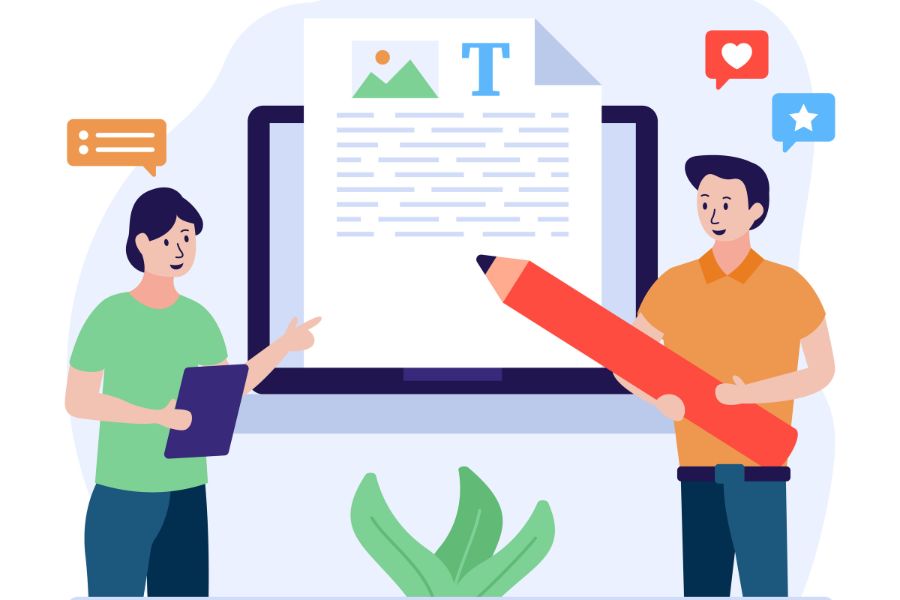Essential Editing and Proofreading Tips for Content Writers
Bravo! After hours of research, thorough analysis of the topic, and carefully weaving each word, your piece of content is ready. But wait! Is it ready to get published? Not actually; writing is the first step to creating content, and the steps that follow are editing and proofreading.
Many writers and editors think proofreading and editing are the same process, but they are not. Content editing happens when you look at the piece carefully and make substantial changes to your text. It aims to improve the structure of the content by adding more clarity and conciseness. On the other hand, proofreading targets grammar, punctuation, spelling errors, and other language mechanics. It is done only after the editing process is complete. During this step, you scrutinise your text or document when the content is finished and ready to publish.
But the question begs: how do you edit and proofread your content?
Do not worry; we have got your back. We will walk you through editing and proofreading tips that will help you make your article publish-ready. Let’s dive in right here:
Content Editing Strategies

Wearing an editor’s hat is not an easy feat. Editing is a step-by-step process that you must follow to complete your content editing.
Read the content through the lens of a reader
Undoubtedly, you have written the content well, but once it is complete, read it thoroughly, putting yourself in the reader’s shoes. If you were the reader, would you like the way you have presented the entire topic? Look for issues such as awkward phrasing, unclear explanations, or repetitive information. Wherever you feel the content doesn’t read well, highlight it and move on.
Pro tip: Re-reading your content is one of the top editing and proofreading tips for content writers.
Check the entire content again
After you go through the above steps, it is time to recheck the entire content. If you have followed the above steps religiously, you will have some highlighted sentences and parts, which you can edit now. At this step, your errors are identified, and you can edit and add more structure to your content.
Allow yourself a break, then edit again
One editing and proofreading tip is not to do anything. This means you must allow yourself some time between two rounds of editing. Editing back and forth for a very long time will not yield the desired results. Allow yourself some time, take a walk outside or grab some coffee, and come back to the article with a fresh mind.
If there are still some edits left, you will recognise them now.
Read again to ensure the content reads well
Your content will look well-edited now. In this stage, you have to re-read the content and ensure that it delivers what it has been written for. Consider the reader’s experience-is the content engaging, informative, and easy to understand? You can also check the placement of your keywords and work on H1, H2, and more to optimize them for better online visibility.
Proofreading Strategies
After discussing the editing tips, we come to the final step of making your content publish-ready. Proofreading is the last stage in the content writing process. Let us share some of the proofreading methods from the foolproof editing and proofreading tips for writers.
Read sentences for grammar
When you wear the hat of a proofreader, you must read your content aloud. Go through every word written there and ensure that there are no grammatical errors. While there are tools like Grammarly, etc., to help you, we suggest you proofread your content by yourself. These tools can be useful for catching common errors, but they should not replace your own careful reading and consideration of the text.
Check the spelling thoroughly
You might wonder why we have added this step here. It is obvious and so easy, but it is not as easy as it is assumed to be. If you read your content in the flow, your mind is less likely to pick up spelling errors because your brain is trying to comprehend the content. To work on your spelling, start by reading the last word and work your way up.
Take a printout and read it again
If you can take a printout of your content, do that and give it a final read. Try to recognise proper names, punctuation, fonts, font sizes, and heading errors and work on them.
End Notes

An efficient content writer should also be a patient editor and proofreader. Both the editing and proofreading processes must go slowly. If you try to speed up the process, you will end up committing more errors. We hope the editing and proofreading tips will help you create clear, readable, and concise content that your audience will love to read.
Image Reference: Freepik
Disclaimer: All trademarks, logos, and brand names are the property of their respective owners. All company, product, and service names used in this website are for identification purposes only. Use of these names, trademarks, and brands does not imply endorsement.







